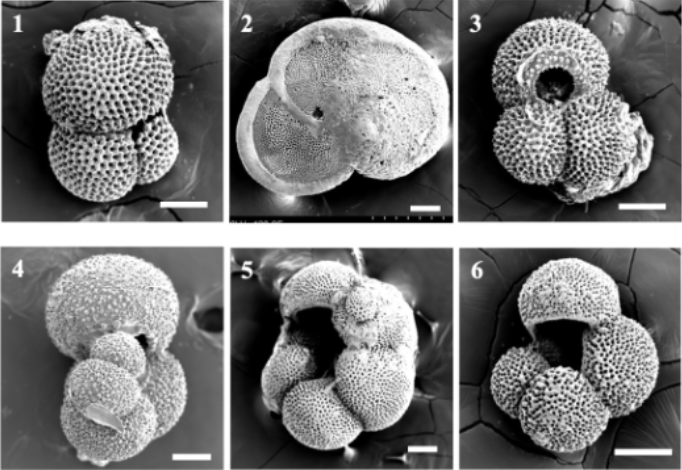There is a clear correlation between planktonic foraminifera fluxes and seasonally changing environmental conditions
10 Jan 2024

Planktonic foraminifera are calcareous zooplankton inhibiting the water column. They are sensitive to hydrographic stresses, and variations in their population may signify shifts in environmental conditions making them valuable for monitoring seasonal changes in modern oceans. In this study, the fluxes (downward movement) of planktonic foraminifera in the water column were observed for a period of one year in the Maldives. Results show that there is a clear correlation between planktonic foraminifera fluxes and environmental conditions. Strong winds brought by the Asian Monsoon drove mixing in the upper layer of the water column. This enriches nutrients and subsequently results in an increase in planktonic foraminifera fluxes.
This study is the first to report on the fluxes through the water column of planktonic foraminifera in the Maldives. The Maldives, an archipelago stretching from north to south in the Indian Ocean, is made up of two rows of atolls that create an enclosed body of water known as the Inner Sea. Because of its distinctive structure, the Maldives serves as a natural sediment trap preserving a remarkable 25-million-year record of past environmental shifts in the Indian Ocean (Betzler et al., 2017). Sediment traps were deployed for one year in two areas within the Maldives, namely the Kardiva Channel and Inner Sea. The study investigated how planktonic foraminifera react to hydrographic variations during the monsoon seasons. Gaining insights into the current behavior of planktonic foraminifera with respect to productivity and ocean circulation holds significant importance in reconstructing the history of the oceans.
Read the full paper: https://www.frontiersin.org/articles/10.3389/feart.2023.1141263/full
